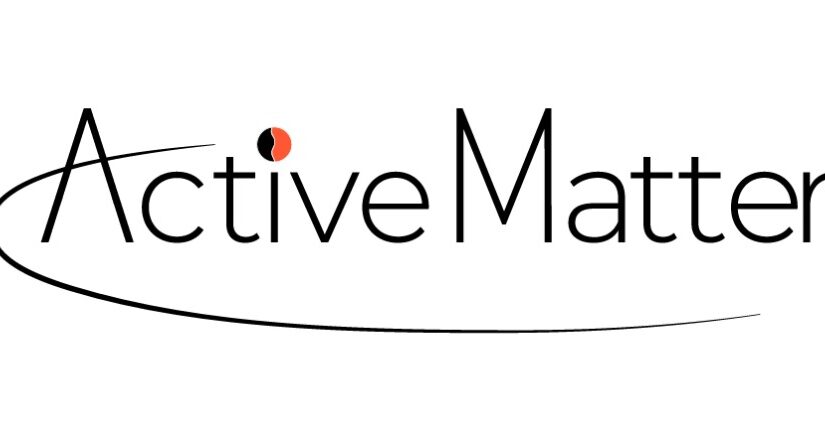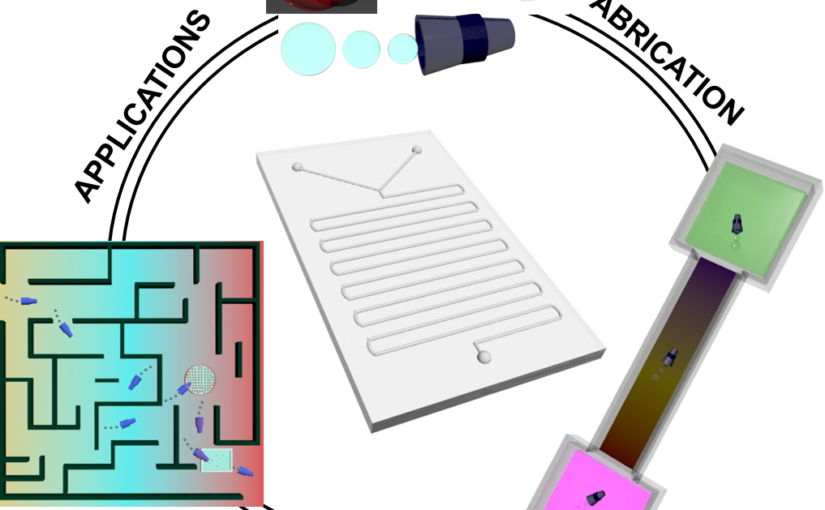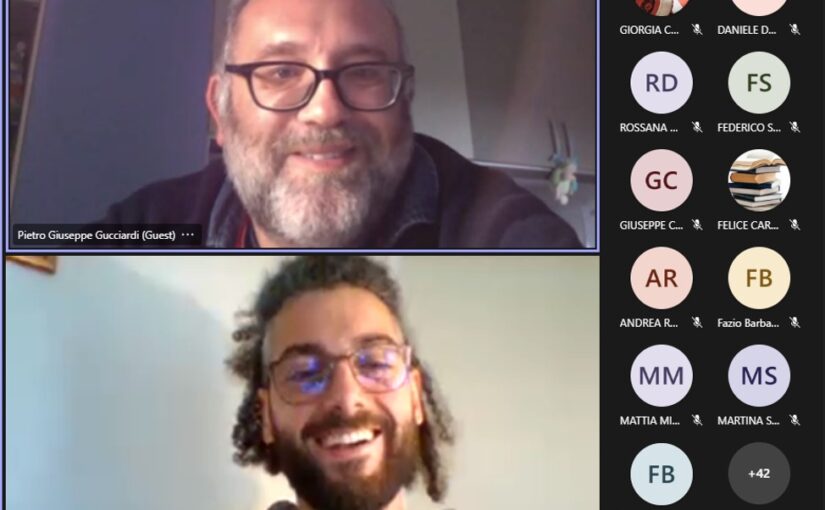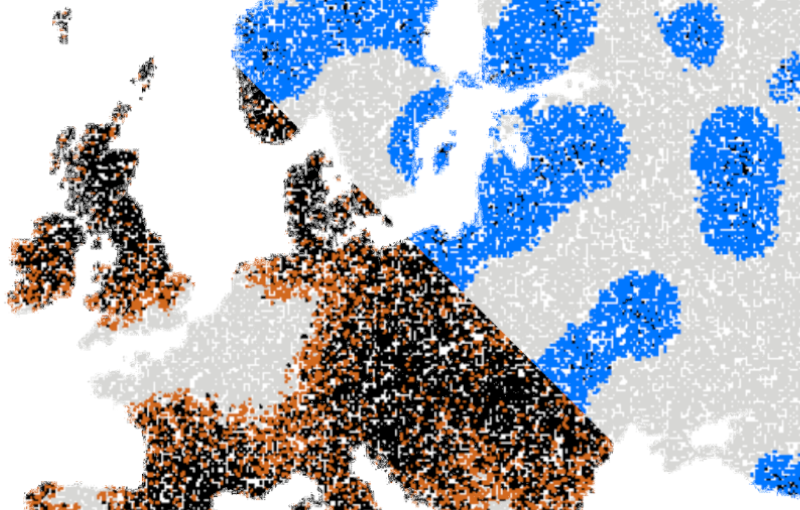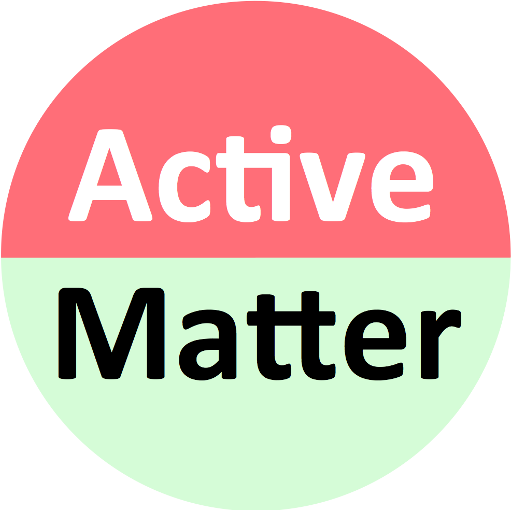
 New ActiveMatter logos: color and BW version. (Image by ActiveMatter ESRs)
New ActiveMatter logos: color and BW version. (Image by ActiveMatter ESRs)
News
Microfluidics for Microswimmers, a tutorial review published in Small

Priyanka Sharan, Audrey Nsamela, Sasha Cai Lesher-Pérez and Juliane Simmchen Small, 2007403 (2021) doi: 10.1002/smll.202007403
Abstract: This paper provides an updated review of recent advances in microfluidics applied to artificial and biohybrid microswimmers. Sharing the common regime of low Reynolds number, the two fields have been brought together to take advantage of the fluid characteristics at the microscale, benefitting microswimmer research multifold. First, microfluidics offer simple and relatively low‐cost devices for high‐fidelity production of microswimmers made of organic and inorganic materials in a variety of shapes and sizes. Microscale confinement and the corresponding fluid properties have demonstrated differential microswimmer behaviors in microchannels or in the presence of various types of physical or chemical stimuli. Custom environments to study these behaviors have been designed in large part with the help of microfluidics. Evaluating microswimmers in increasingly complex lab environments such as microfluidic systems can ensure more effective implementation for in‐field applications. The benefits of microfluidics for the fabrication and evaluation of microswimmers are balanced by the potential use of microswimmers for sample manipulation and processing in microfluidic systems, a large obstacle in diagnostic and other testing platforms. In this review various ways in which these two complementary technology fields will enhance microswimmer development and implementation in various fields are introduced.
Outreach talk by David Bronte Ciriza at Liceo Archimede
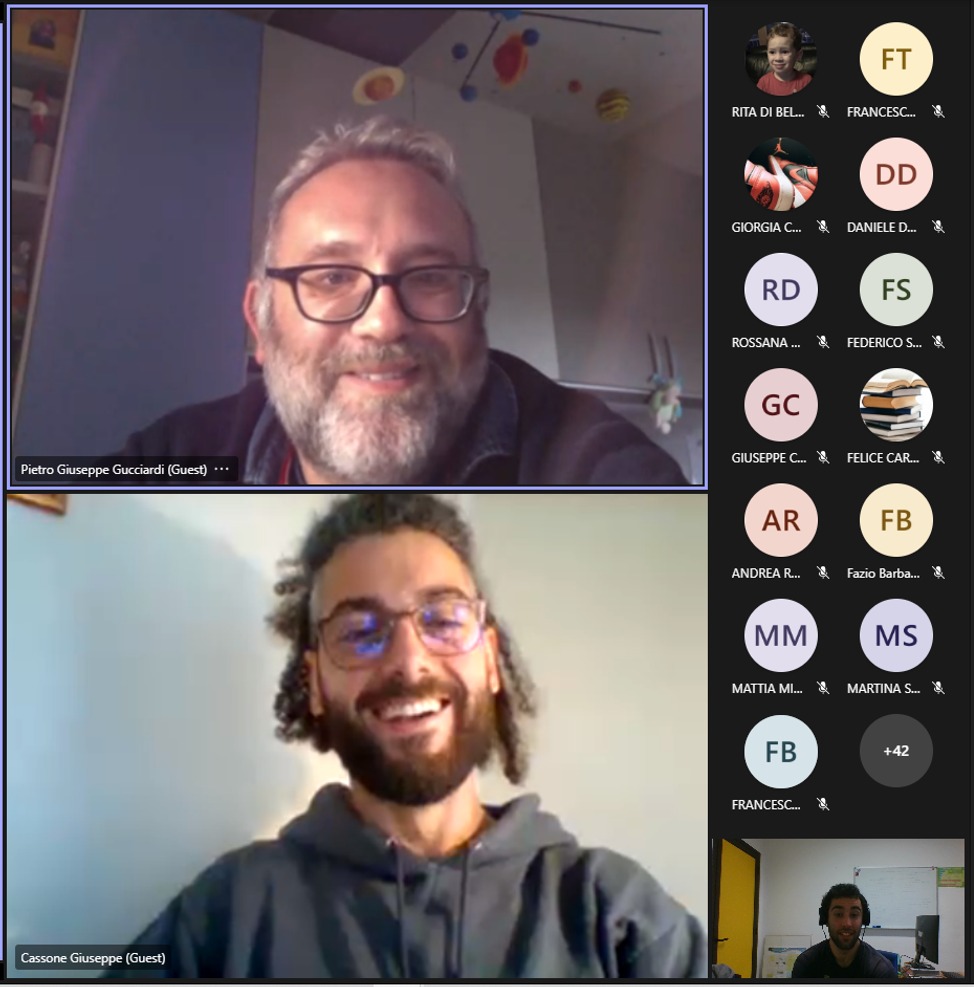
Effect of viscosity on microswimmers: a comparative study published in ChemNanoMat

Audrey Nsamela, Priyanka Sharan, Aidee Garcia-Zintzun, Sandra Heckel, Purnesh Chattopadhyay, Linlin Wang, Martin Wittmann, Thomas Gemming, James Saenz and Juliane Simmchen ChemNanoMat (2021) doi: 10.1002/cnma.202100119
Abstract: Although many biological fluids like blood and mucus exhibit high viscosities, there are still many open questions concerning the swimming behavior of microswimmers in highly viscous media, limiting research to idealized laboratory conditions instead of application‐oriented scenarios. Here, we analyze the effect of viscosity on the swimming speed and motion pattern of four kinds of microswimmers of different sizes which move by contrasting propulsion mechanisms: two biological swimmers (bovine sperm cells and Bacillus subtilis bacteria) which move by different bending patterns of their flagellaand two artificial swimmers with catalytic propulsion mechanisms (alginate microtubes and Janus Pt@SiO 2 spherical microparticles). Experiments consider two different media (glycerol and methylcellulose) with increasing viscosity, but also the impact of surface tension, catalyst activity and diffusion coefficients are discussed and evaluated.
Press release on Machine learning can help slow down future pandemics

Here the links to the press releases:
Swedish: Maskininlärning kan bidra till att bromsa framtida pandemier
English: Machine learning can help slow down future pandemics
David Bronte Ciriza nominated for a Student Paper Prize at the Biophotonics Congress

This work, which is the fruit of a collaboration between the groups at the CNR-IPCF and the University of Gothenburg, shows the potential of machine learning for faster and more accurate optical forces calculations. The extended abstract can be found here.
Based on the oral presentations of the finalists, the jury will select the winner. David will present on April 16th at 5:00 pm (CEST).
Presentation by D. Bronte Ciriza at OSA-OMA-2021

David Bronte Ciriza, Alessandro Magazzù, Agnese Callegari, Maria A. Iatì, Giovanni Volpe, Onofrio M. Maragò
Submitted to: OSA-OMA-2021, AF2D.2 Contribution
Date: 16 April
Time: 17:00 CEST
Short Abstract:
We show how machine learning can improve the speed and accuracy of the optical force calculations in the geometrical optics approximation
Extended Abstract:
Light can exert forces by exchanging momentum with particles. Since the pioneering work by Ashkin in the 1970’s, optical forces have played a fundamental role in fields like biology, nanotechnology, or atomic physics. Optical tweezers, which are instruments that, by tightly focusing a laser beam, are capable of confining particles in three dimensions, have become a common tool for manipulation of micro- and nano- particles, as well as a force and torque transducer with sensing capabilities at the femtonewton level. Optical tweezers have also been successfully employed to explore novel phenomena, including protein folding and molecular motors, or the optical forces and Brownian motion of 1D and 2D materials.
Numerical simulations play a fundamental role in the planning of experiments and in the interpretation of the results. In some basic cases for optical tweezers, the optical trap can be approximated by a harmonic potential. However, there are many situations where this approximation is insufficient, for example in the case of a particle escaping an optical trap, or for particles that are moving on an optical landscape but are not trapped. In these cases, a more complex treatment of the light-matter interaction is required for a more accurate calculation of the forces. This calculation is computationally expensive and prohibitively slow for numerical simulations when the forces need to be calculated many times in a sequential way. Recently, machine learning has been demonstrated to be a promising approach to improve the speed of these calculations and therefore, to expand the applicability of numerical simulations for experimental design and analysis.
In this work, we explore the geometrical optics regime, valid when the particles are significantly bigger than the wavelength of the incident light. This is typically the case in experiments with micrometer-size particles. The optical field is described by a collection of N light rays and the momentum exchange between the rays and the particle is calculated employing the tools of geometrical optics. The limitation of considering a discrete N number of light rays introduces artifacts in the force calculation. We show that machine learning can be used to improve not only the speed but also the accuracy of the force calculation. This is first demonstrated by training a neural network for the case of a spherical particle with 3 degrees of freedom accounting for the position of the particle. We show how the neural network improves the prediction of the force with respect to the initial training data that has been generated through the geometrical optics approach.
Starting from these results for 3 degrees of freedom, the work has been expanded to 9 degrees of freedom by including all the relevant parameters for the calculation of the optical forces considering also different refractive indexes, shapes, sizes, positions, and orientations of the particle besides different numerical apertures of the objective that focuses the light.
This work proves machine learning as a compact, accurate, and fast approach for optical forces calculation and presents a tool that can be used to study systems that, due to computation limitations, were out of the scope of the traditional ray optics approach.
Morphology of active deformable 3D droplets published in Physical Review X

Liam J. Ruske, Julia M. Yeomans
Phys. Rev. X 11, 021001 (2021)
Abstract:
We numerically investigate the morphology and disclination line dynamics of active nematic droplets in three dimensions. Although our model incorporates only the simplest possible form of achiral active stress, active nematic droplets display an unprecedented range of complex morphologies. For extensile activity, fingerlike protrusions grow at points where disclination lines intersect the droplet surface. For contractile activity, however, the activity field drives cup-shaped droplet invagination, run-and-tumble motion, or the formation of surface wrinkles. This diversity of behavior is explained in terms of an interplay between active anchoring, active flows, and the dynamics of the motile disclination lines. We discuss our findings in the light of biological processes such as morphogenesis, collective cancer invasion, and the shape control of biomembranes, suggesting that some biological systems may share the same underlying mechanisms as active nematic droplets.
Rond Table Discussion on: Advanced Control of Active Matter
The last round table of this workshop regarded the topic advanced control of active matter. As organizers of round table, Audrey Nsamela, Chun-Jen Chen, Sandrine Heijnen, Harshith Bachimanchi and Alireza Khoshzaban, we welcomed and introduced our esteemed guests, namely Jérémie Palacci from University of San Diego, Clemens Bechinger from Konstanz University, Frank Cichos from Leipzig University, and Lucio Isa from ETH Zurich.
The round table started out with a clarification on advanced control of active matter. Active matter can be controlled by numerous external stimuli but implementing control on individual particles or artificial entities is what qualifies as advanced control. Currently, the control of active matter is still far from the behavior and control micro-organisms have on that scale; hence a big challenge lies there for us. Jérémie Palacci introduced an interesting research topic where they found a way to regulate the swimming process of E. Coli by light illumination. Here genetic modification was used to control the proton pump involved in the energy transportation process.
Advanced control of active matter can be applied to model systems where the control is lacking, for example biological systems. In a biological system the control over an organism is limited to the external stimuli that are applied and won’t always result in the same reaction. Therefore, using active particles showing predictable and reproducible behaviors when exposed to a stimulus works perfectly to model and to probe different parameters and thus provide a deeper understanding of the system. The fact advanced control of active matter doesn’t have an application outside of modelling systems is something we shouldn’t be ashamed of.
We concluded the meeting by asking every one of our guests what the promising research directions in the advanced control of active matter are. All of them had a different perspective. Starting with Clemens Bechinger, who was most invested in the further exploration of the applications for model systems. Lucio Isa is mainly looking forward to explore the different materials that we can use to create active material that can subsequently be controlled. Frank Cichos mentioned the importance of looking into new ways to create active particles. So far nature was able to achieve production of active entities with limited waste whereas human production is rather inefficient. Jérémie Palacci pointed out that the current man-made active matter systems are reacting to a strong signal in a well-controlled environment, where nature faces many more factors and still works. It would be interesting to design a system that is resistant to noise.
Round Table Discussion on: Collective Behavior
The fourth roundtable was an opportunity for all students to discuss the topic “Collective Behavior” on Zoom with a panel of guests: Clemens Bechinger from the University of Konstanz, Ivo Buttinoni from Heinrich Heine University in Dusseldorf and Caroline Beck Adiels from Gothenburg University. The event was organized by Daniela Pérez, Danne van Roon, Davide Breoni, Jérémie Bertrand, Laura Natali and Liam Ruske on March 24th.
Although the guests had different background they seemed to agree on the fact that complex behavior can emerge from an ensemble of entities that obey a small number of simple rules. Indeed, minimalistic models such as the Vicsek model account for phase transition from a disordered motion to large scale motion and more; phenomena that appear to be universal.
A question on the role of intelligence and communication in collective behavior started the discussion. Although some animals or colony of bacteria may seem intelligent (e.g. escaping from a predator in a clever way or making long-lasting symbiotic microfilms), we must bear in mind that collective behavior is… collective, and rarely arises from decisions made individually. It may be said that in the animal kingdom, the need for survival requires a need to adapt and therefore to be intelligent, but this need for intelligence can be outsourced and solved at the level of the group rather than hardwired in the physical brain of each animal (or human).
It is also conceivable that one of the entities acts as a leader and ignites a collective behavior. Giovanni Volpe made an interesting remark, stating that a leader is the one who defines the objective function to be optimized by the group. The idea of leadership in collective behavior of microscopic systems remain largely unexplored by physicists.
After one hour of fruitful discussion and back and forth between the students and the guests, the session was finished and we resumed our activities with a better understanding of collective behavior. We thank the panelists for their inputs and attendance!

